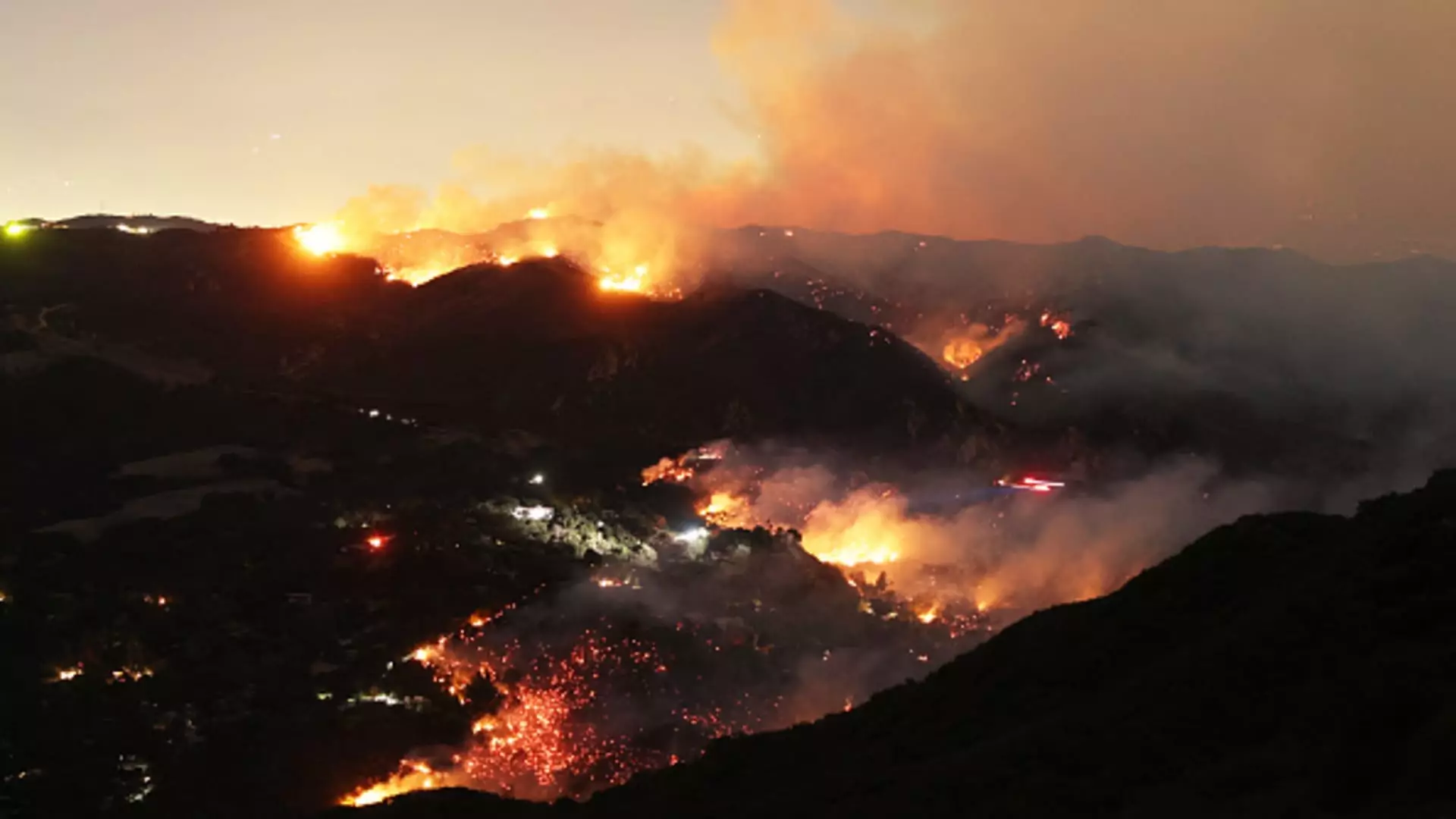Recently, Southern California has been engulfed in a series of devastating wildfires that have set alarming records. The fires, primarily affecting the Greater Los Angeles area, have claimed over 12,300 buildings and consumed a staggering 40,000 acres of land. As reported by NBC News, these disastrous events have forced approximately 88,000 residents to evacuate and left another 89,000 on alert for potential evacuation. Such unprecedented destruction has raised fears and uncertainties among the local populace, who are grappling with the repercussions amid a climate of chaos.
The financial implications of these disasters are staggering, with estimations suggesting that losses attributed to the fires could exceed $20 billion, as per analyses by financial institutions like JPMorgan and Wells Fargo. Such figures reflect not only insured losses but also hint at broader economic disruptions, which could amount to an astonishing $60 billion. In the midst of this crisis, the complexities of insurance claims become particularly critical for residents seeking to reclaim their lives from the ashes.
For those affected, understanding the nuances of filing an insurance claim is crucial to regaining some semblance of normalcy. Karl Susman, an insurance expert based in Los Angeles, recommends that victims of the fires initiate their claims promptly—even when the full details of the damages are not available. “Get your claim filed as quickly as you can,” suggests Susman, emphasizing the urgency of getting the recovery process started.
The onslaught of claims is likely to overwhelm insurers, potentially lengthening processing times. Hence, starting early increases the chances of timely support from the insurance companies. Victims must not hesitate to move forward with their claims despite the uncertainty surrounding their properties. The challenges of determining the extent of damages, the nature of claims, and the added pressure from a surge in insured losses can all contribute to delays, warranting swift action.
A pressing concern arises for renters, who often face unique challenges when dealing with such widespread devastation. Fortunately, experts, including Shannon Martin, an insurance analyst, affirm that renters have access to most of the same resources available to homeowners. The critical first step for renters, as with homeowners, is ensuring personal safety followed by setting up an insurance claim.
Moreover, many rental insurance policies include “loss of use” coverage, providing essential funding for temporary accommodations. As Jeremy Porter from the First Street Foundation highlights, this provision serves as a vital lifeline, enabling displaced residents to secure shelter while navigating the tumultuous aftermath.
Maintaining meticulous records during this time is not just advisable—it’s essential. Douglas Heller from the Consumer Federation of America stresses the importance of keeping receipts and documenting conversations with insurance companies, stating, “The better you document your process, the easier it will be to demonstrate your claim for reimbursements.”
For homeowners suffering severe losses, immediate actions are necessary. Susman recommends that residents promptly contact utility companies to halt services, potentially mitigating unnecessary expenses during this period of dislocation. Furthermore, car owners should be aware that comprehensive auto insurance policies typically cover losses from wildfires, ensuring that any vehicles lost in the disaster may still be compensated.
Another important financial consideration is property taxes. Homeowners who sustained damages exceeding $10,000 or who have lost their homes entirely can apply for a property tax reduction through their local assessor’s office. Susman points out that this option is often overlooked, yet it offers significant relief during the rebuilding phase.
For those without insurance, assistance is available through various avenues. Federal, state, and non-profit organizations are stepping up to provide aid. President Biden announced a one-time aid payment of $770 for wildfire victims through FEMA, with thousands of survivors already registered for this support. Additional funding may come from FEMA’s Individuals and Households Program to assist those in securing temporary housing.
Residents are encouraged to explore local resources, including workshops hosted by the California Insurance Commission. Such events aim to provide vital information regarding recovery, and connecting with local support groups can help foster community resilience during these trying times.
In closing, while the road to recovery may be fraught with challenges, both residents and local authorities are mobilizing resources to navigate the aftermath of these catastrophic wildfires. By actively participating in the recovery process and leveraging available support, affected individuals can work toward rebuilding their lives from the ashes of this tragedy.

